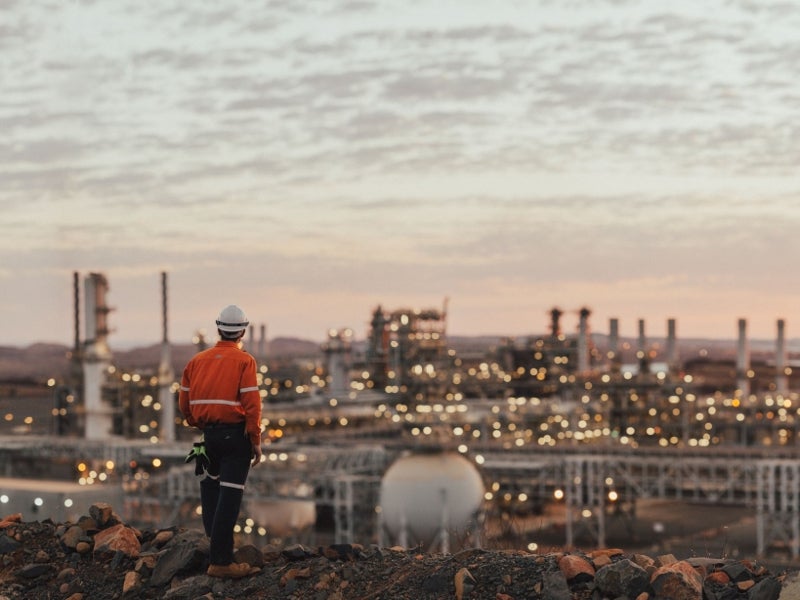Pyxis Hub is a subsea gas tieback being developed in production licence WA-34-L, within the Greater Pluto field area, offshore North West Australia.
Located in the Carnarvon Basin in Australia’s Commonwealth waters, the Pyxis Hub project is intended to support the continuous operation of the Pluto LNG terminal located in the Burrup Peninsula.
Australian Petroleum Company Woodside Energy is the operator and holds 90% equity stake, while Kansai Electric and Tokyo Gas each hold a 5% stake in the Pluto LNG project.
The Pyxis Hub project involves the tie-back of the Pyxis gas field as well as two infill wells of Xena and Pluto North fields with the existing subsea infrastructure of the Pluto gas field.
The subsea tie-back project was conceptualised in the second quarter of 2018, while the front-end engineering and design (FEED) studies were initiated in January 2019.
Woodside Energy took final investment decision on the project in August 2019 and awarded the engineering, procurement, and construction (EPC) contract for the project in October 2019.
Offshore works for the project are expected to be commenced in the first quarter of 2020, with commissioning scheduled for 2021.
Greater Pluto offshore field details
The Pluto gas field was discovered by drilling the Pluto-1 discovery well in April 2005, which was followed by the successful drilling of three appraisal wells by 2006.
The adjacent Xena gas field was discovered through the drilling of the Xena-1 exploration well approximately 6km away from the Pluto-2 appraisal well in September 2006. Further, the Xena-2 and Xena-3 appraisal wells were drilled during the first quarter of 2008.
The Pluto and Xena fields were developed through a total of five production wells connected to the Pluto A offshore platform, which commenced operations by providing feed gas to the Pluto LNG train in March 2012.
The Pyxis gas field, located 15km north of the Pluto gas field infrastructure within the Greater Pluto area, was discovered through the drilling of the Pyxis-1 exploration well in April 2015. Drilled to a total depth of 3,347m, the Pyxis-1 exploration well encountered 18.5m of net gas pay within the Jurassic sandstone reservoir.
Other smaller gas field discoveries within the Greater Pluto include Larsen, Martell, Martin, Noblige, and Remy.
The Greater Pluto field area is estimated to contain more than five trillion cubic feet (tcf) of recoverable dry gas reserves.
Pyxis Hub project details
The Pyxis Hub project involves the tie-back of a total of four production wells, including two new wells in the Pyxis field and two infill wells in the Pluto North and Xena fields. The four wells will be developed in water depths ranging between 170m and 990m.
The gas producing wells will be connected to the Pluto A platform through an approximately 25km tie-back involving subsea Xmas trees, flexible flow-lines, production manifolds, and service umbilicals.
Mobile offshore drilling units (MODU) or a dynamically positioned drill ship will be used to carry out the drilling.
The new Pyxis production wells will be drilled first, followed by the Pluto North and Xena-2 infill wells.
Scheduled to commence production in 2021, the Pyxis Hub project will complement Woodside Energy’s Pluto LNG project, the Pluto-New West Shelf (NWS) Interconnector project, as well as its broader vision to transform the Burrup Peninsula into a major regional LNG hub.
Pluto A platform details
The Pluto A Platform is an unmanned fixed platform located in 85m-deep waters, approximately 180km north-west of the Burrup Peninsula.
Operational since 2012, the platform is connected with the Pluto LNG facility through a 180km-long and 36in-diameter trunk line to supply feed gas from the Pluto and Xena offshore fields.
Contractors involved
TechnipFMC was awarded the subsea engineering, procurement, construction, and installation (EPCI) contract for the Pyxis Hub offshore project in October 2019.
It will be responsible for the design, delivery, and installation of subsea equipment including a subsea production system, flexible flow-lines, and umbilicals for the project.
Burrup Island growth projects
The Burrup Island currently houses the 4.9 million tonne per annum (Mtpa) Pluto LNG facility and the 18.5Mtpa Karratha gas plant.
The Karratha gas plant, which is the onshore processing facility for the NWS Project operated by Woodside, has been in operational since 1984 and consists of five LNG trains, two domestic gas trains, and three liquefied petroleum gas (LPG) fractionation units.
Located in the wider 200ha-Pluto LNG Park, Pluto LNG comprises a single processing train that commenced operations in 2012.
Woodside commissioned FEED studies for the 5Mtpa Pluto LNG Train 2 in December 2018, after increasing equity stake in the Scarborough gas field to 75% to become its operator in March 2018. The Scarborough gas field is expected to start production in 2023, while the Pluto LNG-2 is expected to come on-stream in 2024.
Woodside also plans to develop a pipeline, named Pluto-NSW Interconnector, to transport gas from Pluto LNG to the Karratha gas plant to utilise the short-term spare capacity of the latter.
Woodside’s vision is to develop up to 25tcf of dry gas resources from Scarborough, Browse, and Pluto fields, while leveraging the onshore LNG facilities on the Burrup Peninsula.





